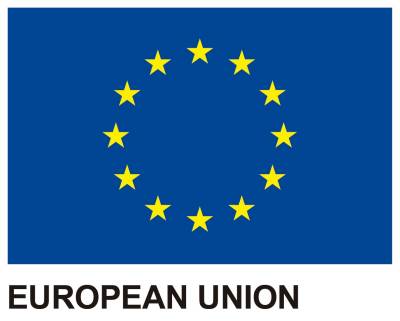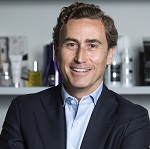World leader in the beauty industry, L'Oréal has boasted a presence in Spain for more than seven decades, with a factory in Burgos that is now 50 years old. One million products are created every day at this factory, reaching more than fifty countries.
The French company has a solid, long-term attachment to Spain, with almost 2,500 employees and a clear commitment to continue to attract talent.
What does the Spanish market mean to the company?
Spain is a core market for the Group, not just because of its size and dynamism, but because we are exporters of some of the Group's best practices and initiatives. In digital acceleration, in sustainability... We are ranked amongst the Group's Top 4 in Europe, maintaining the pace seen in 2019.
The L'Oréal factory in Burgos is celebrating its 50th birthday. How important has this infrastructure been to the brand's expansion in Spain?
The Burgos factory is the spearhead of L’Oréal Spain's commitment to making an economic contribution to our country, as well as to the environment and society. It is the perfect example of how, at L’Oréal, we put our purpose of creating the beauty that makes the world go round into practice.
One million products a day are created at this factory under the highest standards of quality and sustainability, reaching more than fifty countries around the world. This factory exports 94% of what it manufactures, taking the "Made in Spain" concept to many corners of the world, and with the highest seal of quality guaranteed by the L’Oréal Group.
The Group is staunchly committed to this and this is a source of great pride for L’Oréal Spain. But this comes as no surprise. Long before the concept of CSR, this plant was already working with special employment centres, more than 35 years ago. It not only sets a social or environmental example, but also an example of efficiency and industry 4.0. That's why at L’Oréal we invest an average of more than 10 million euros a year in this area, which we allocate to modernising its facilities and operations. We will continue with this commitment in the coming years and will make the necessary investments to meet the challenges we face. Because L’Oréal aims to celebrate another 50 years in Burgos. Our ambition is for those who come after us to celebrate 100 years of this factory being in operation.
At L’Oréal, we have a solid, long-term commitment to Spain. We want to contribute to the economic reconstruction of our country and to achieve this we will continue to invest in this plant, a world leader in sustainable industry 4.0.
How has it made the switch from being a local plant to an international plant?
Spanning a surface area of 189,000 m2, with 42 packaging lines, 110 different formats and more than 4,500 active references 1 million products are shipped from the factory every day to fifty countries, 67% of which are in Europe. Furthermore, it maintains its commitment to Spain, as 35% of its suppliers are Spanish. It started as a local factory, opening in 1971 before becoming an international factory in 2008, and now exporting 94% of what it manufactures. The plant has increased its production by 8.5% over the past three years on account of a growing interest in international markets and the increase in products from other divisions apart from hairdressing brands.
Exports from the factory are mainly being led by interest from China and its high demand for luxury brands such as Kérastase, for which global manufacturing is based in Burgos, and which has resulted in the Asian giant being the third biggest market for the Burgos plant, only behind France and the United Kingdom.
This factory is a pioneer in Industry 4.0 and sustainability. What type of strategy has been applied?
As we have already mentioned, the L’Oréal International Hair Product Factory in Burgos is a pioneer in social and environmental projects. It was one of the Group's first plants to achieve carbon neutrality in 2015, having commissioned a biomass trigeneration plant that allows all the energy it consumes to be 100% renewable. Just two years later, the plant achieved a new milestone by becoming L’Oréal's first waterloop factory in the world. This means that it only uses water as a raw material and for human consumption, having a closed circuit system that recovers and recycles the water used during the production phase. This provides for savings of 28,000 m3 litres each year, the equivalent of more than 10 Olympic swimming pools.
With respect to climate, the factory has developed the "Burgos Green Lines" project, a sustainable corridor of trains and ships that aims to reduce CO2 emissions from its suppliers (scope 3), avoiding transport in conventional planes and lorries. This has led to, it achieving savings of 20% in relation to its transport-related carbon emissions up until 2020.
Another pioneering environmental initiative has been the creation of a greenhouse at its facilities for drying sludge, one of the main types of waste generated at the plant. Through an ecological process, this dryer will make it possible to use solar energy to reduce the volume by 50%, thereby reducing the amount transferred and the CO2 emissions generated by the process.
Which lines of business are best received in Spain?
Thanks to its digital leadership and strong e-commerce growth, the Group has consolidated its leadership position in most countries and has gained market share in all its strategic categories. The products that have performed the best are skin care, hair care and fragrances.
We will maintain our market leadership position, with increased penetration in all categories: makeup, skin care and colouring and we will continue with new brands and categories, harnessing all opportunities to attract more consumers. We are optimistic about 2021, having already surpassed expectations in many categories in 2019.
In 2020, L'Oréal's profits grew in Spain. What are your expectations for this year?
At the start of 2021, the growth rate exceeded market growth in all four divisions and we are confident that the beauty market in Spain will recover in 2021. The beauty market is expected to recover by around 6%-8% in Spain in 2021, and we are confident of surpassing this level.
Next year you are moving your offices in Madrid to a new building in the Madbit district. What will the new headquarters look like?
That’s right, in 2022 we will move to our new headquarters, which boast the highest level of environmental certification, offering an innovative environment adapted to new ways of working in a more agile, collaborative and efficient manner. The headquarters are fully aligned with the sustainability commitments assumed by the Group as part of the L'Oréal For The Future programme. The building will boast two of the most important international certification systems: LEED Platinum, which recognises that the building meets the highest standards of eco-efficiency and rewards the use of sustainable strategies in all construction processes. This is in addition to the WELL certification (Well Building Standard), which certifies that the structure has been designed by taking people's well-being and health into account. It will be managed by technology, meaning that the office provides added value and becomes a veritable experience. An example of the way we will achieve this is the app, where users can reserve a work space, a parking space, choose their meal, plan meetings etc.



